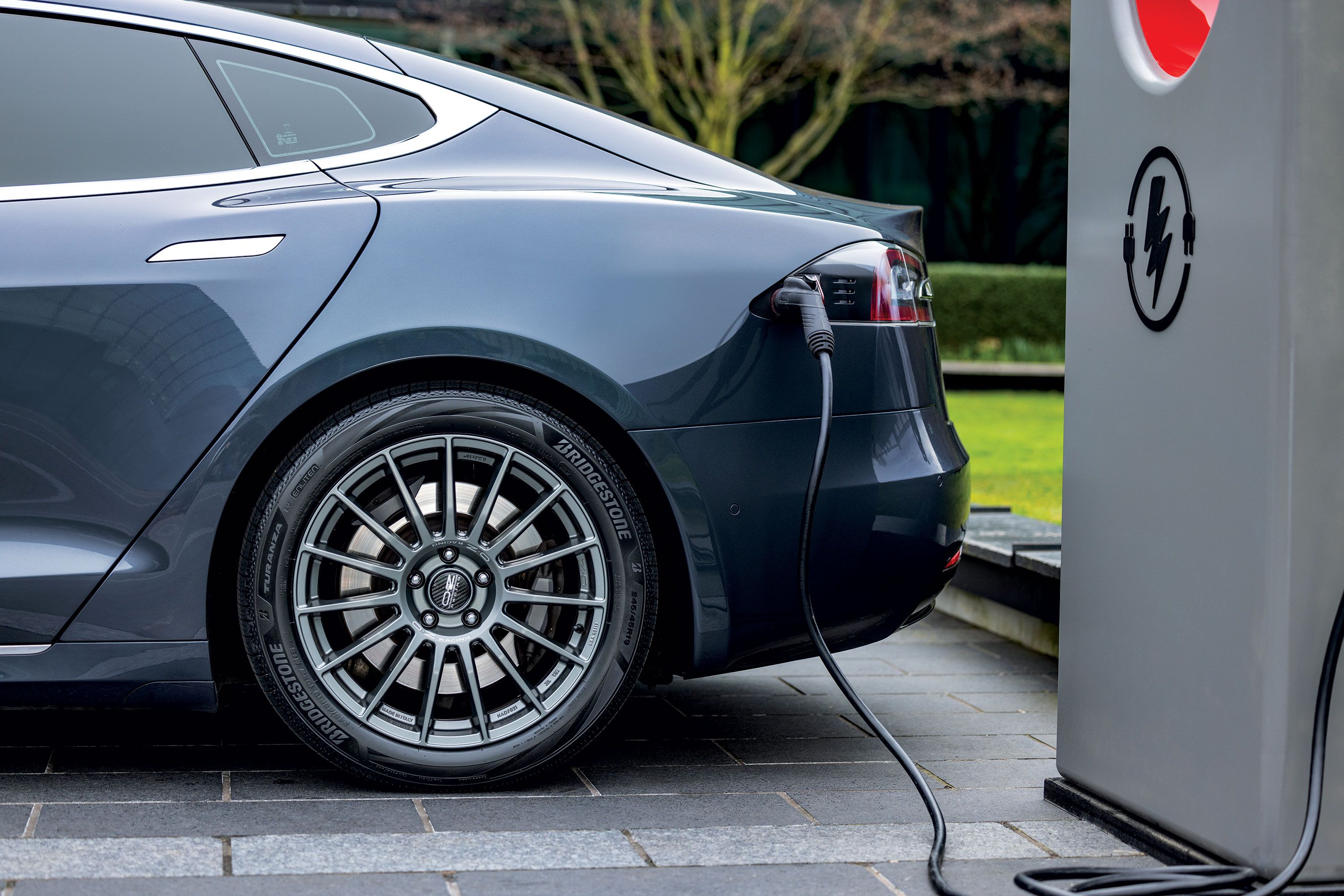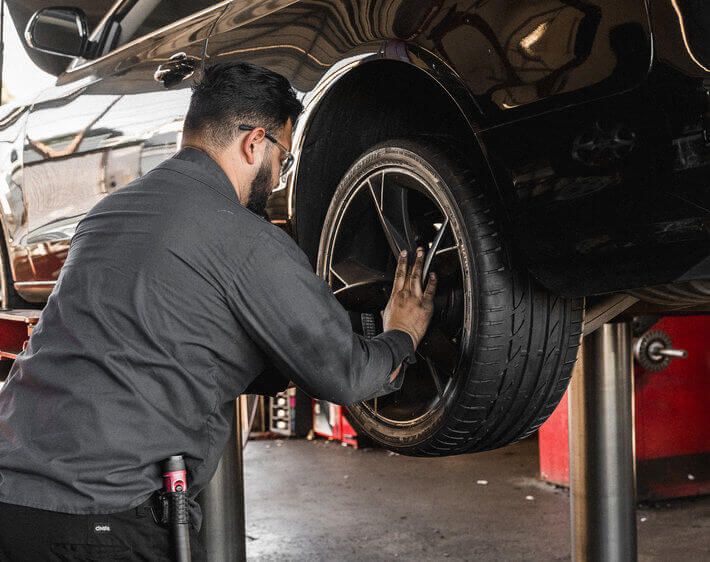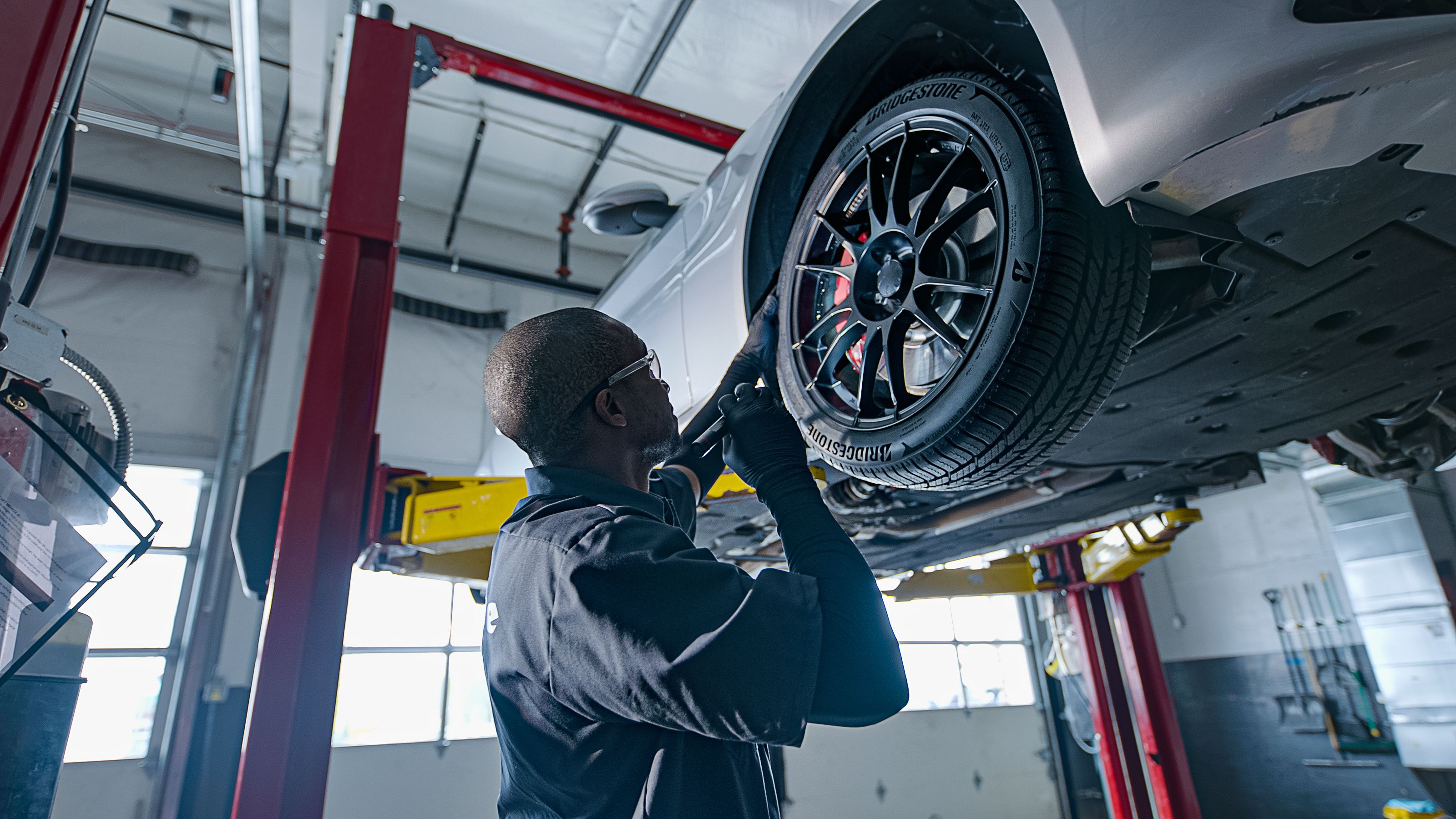With various tire types on the market, choosing the right set for your vehicle can be difficult — even in the most temperate of seasons. As temperatures drop, that dilemma only becomes more pronounced. This can leave many drivers wondering whether they can use all-season tires all year and questioning the difference between all-season and winter tires.
Read on to find out how tread depth, pattern, and tire compound play a massive role in the battle of all-season vs. winter tires.
Main Differences Between All-Season and Winter Tires
Tread Depth and Patterning
The tread patterns found on winter tires tend to be aggressive — consisting of irregular biting edges and wide, deep tread voids to help ensure that your tires get as much traction as possible. In addition to their aggressive tread, some winter tires also utilize sipes — small grooves in the tread that improve grip on wet, icy surfaces.
Since all-season tires have to adapt to a wide variety of weather conditions, these features are present to a lesser extent. All-seasons generally have shallower, narrower tread, and less siping than their winter-specific rivals.
Tread Compound
Though the tire compounds found in all-season tires are impressively adaptable, compromises have to be made on both ends of the temperature spectrum. This is because winter features can be detrimental to summer driving and vice versa. As such, all-season compounds are more likely to stiffen up in extremely cold temperatures than winter tires, which can result in reduced traction.
If your area’s temperature consistently drops below 45° F, winter tires are likely the safest choice for your vehicle. However, this measurement may vary from region to region. Winter tire's tread compound is formulated to stay pliable and help maintain traction even in freezing conditions. Unfortunately, this soft compound also means that you probably shouldn’t keep your winter tires on all year, as they’ll wear much faster when the weather warms up.
If you think you might need winter tires but don’t know where to start, check out our guide on what to look for when buying winter tires. Ultimately, we recommend a set of Bridgestone Blizzaks. Inspired by polar bear paws, their Nanopro-Tech & RC Polymer and aggressive siping help them stay soft during harsh winters and keeps your vehicle firmly planted on the road.
Driving with All-Season Tires in Winter: Yay or Nay?
All-season means all season, right? Well, not quite. We’ve said before that all-season tires are sort of like your favorite baseball cap. Though you can wear it year-round, it might not be the best choice for every situation. Similarly, all-season tires may not be the best choice for more extreme temperatures — hot or cold. To provide adequate performance in both warm and cold weather, sacrifices must be made on both ends of the spectrum.
However, if you live in an area like San Diego or Los Angeles, California, where the weather remains temperate year-round, then all-season tires may provide the perfect blend of weather performance for you. We recommend Firestone Weathergrip tires, which are designed to command the road year-round and might just be the closest thing you’ll get to a true all-season tire. Even better, their three-peak mountain snowflake certification means that even if you do encounter snow, your tires will still perform their best.
Still Not Sure What Tire is Best for You?
Choosing the proper tire type for your ride can depend on numerous factors, but it shouldn’t be a hassle. Stop by your local Firestone Complete Auto Care, and our technicians will help you make the right decision for your area, vehicle, and budget. Schedule an appointment for tire installation today!



